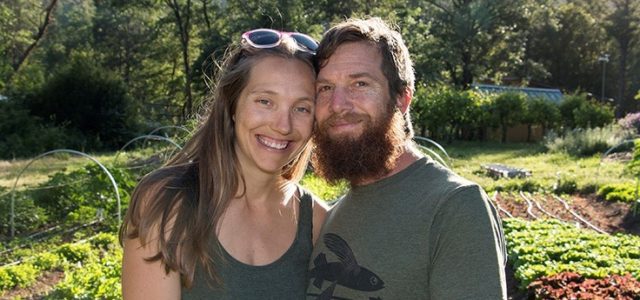Tips for Running Your Farm on Solar Power
July 16, 2018 MJ Shareholders


Briceland Forest Farm has never been connected to a power grid. (And yes, you read that right.) “Because of our remote location, grid power was not available to us,” explains Daniel Stein, co-owner of Briceland Forest Farm, a Humboldt County, Calif., outdoor farm that has used solar power for 40 years.
Using the sun to power the farm’s production hasn’t always been easy. “In the early years, it was just enough to power a small light to cook and read by in the evenings,” Stein describes. But today, the farm—which grows flowers, herbs and vegetables as well as cannabis—runs its “home and guest cabins’ power needs—including multiple refrigerators, laundry facilities, an aeroponics cloner, and even a small electric utility vehicle for use on the farm—on solar power,” Stein says. “Using solar makes us more sustainable; it reduces our dependence on fossil fuels and other non-sustainable power production from the grid.”
What’s more, Stein adds, “it frees us from dependency on grid power during the winter when power outages are frequent and prolonged in our rural area—and it raises our awareness of power usage in production. It makes us frugal and efficient with our power in a way that doesn’t happen when the production of power is out of sight and the supply is endless.”
While Briceland Forest Farm has never crunched the numbers—after all, the grower had to use solar power from the start—Stein says, “it is relatively easy to compare the cost of your electric bills to the cost of a solar installation and see how much time it would take to pay the investment back.” Briceland Forest Farm’s return on investment “is immeasurable in terms of quality of life, as well as being on the right [moral] track,” he says.
If you’d like the sun to power your grow, then here are Stein’s top three tips for going solar.
1. Talk to a professional about your individual site needs.
Every farmer and cultivator will have different solar-power needs.. “And the best way to research [what you need] is to talk to a professional,” Stein says. “There are many solar installers and distributors throughout the country, and they can be easily found online.” (If you happen to be in Humboldt County, then Stein recommends Greenwired Renewable Energy.) But no matter with whom you consult, the company should “do a free initial consultation to assess how to move forward with your particular needs and site.”
2. Change up your business model.
Your current business model may not be compatible with going solar, says Stein. “It might never be sustainable to do large indoor grows powered by solar panels,” he warns. “If your business isn’t sustainable and that is your goal, adjust your model until it fits your morals!”
3. Reduce your power consumption today.
“The first step to sustainability is to reduce your power consumption and ask yourself the right questions,” says Stein. Some of those questions include: “What are ways you can reduce your use? Can your clone room have supplemental natural light? LED lighting?” After all, switching to solar power is only one way to make your grow more sustainable.
Photo courtesy of Briceland Forest Farm
MJ Shareholders
MJShareholders.com is the largest dedicated financial network and leading corporate communications firm serving the legal cannabis industry. Our network aims to connect public marijuana companies with these focused cannabis audiences across the US and Canada that are critical for growth: Short and long term cannabis investors Active funding sources Mainstream media Business leaders Cannabis consumers








